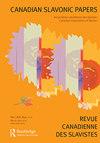Space and time in the socialist countryside: all-Union anniversaries in Vologda rural schools during the 1960s and 1970s
IF 1.6
Q2 ETHNIC STUDIES
引用次数: 0
Abstract
ABSTRACT In this article, the author examines how all-Union anniversaries during the 1960s–70s were used propagandistically to disseminate Soviet values as well as modern spatio-temporal ideas to rural communities. As part of the program to build communism, announced at the 22nd Congress of the Communist Party in 1961, anniversaries were employed to help minimize differences between city and countryside and to bring the way urban and rural people understood time and space into closer alignment. The author argues that the memory of the Soviet past, as propagated through anniversaries, created a memory framework that infused local history with Soviet notions of space and time.社会主义农村的空间和时间:20世纪60年代和70年代沃洛格达农村学校的全联盟纪念日
摘要在这篇文章中,作者探讨了20世纪60年代至70年代的所有苏联纪念日是如何被宣传用于向农村社区传播苏联价值观和现代时空思想的。作为1961年中国共产党第二十二次代表大会宣布的建设共产主义计划的一部分,纪念日被用来帮助最大限度地减少城市和农村之间的差异,并使城市和农村人民对时间和空间的理解更加一致。作者认为,通过周年纪念传播的对苏联过去的记忆创造了一个记忆框架,将苏联的空间和时间观念融入了当地历史。
本文章由计算机程序翻译,如有差异,请以英文原文为准。
求助全文
约1分钟内获得全文
求助全文

 求助内容:
求助内容: 应助结果提醒方式:
应助结果提醒方式:


